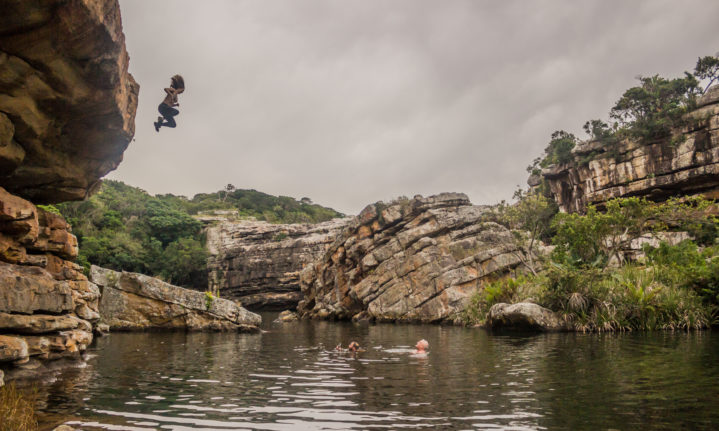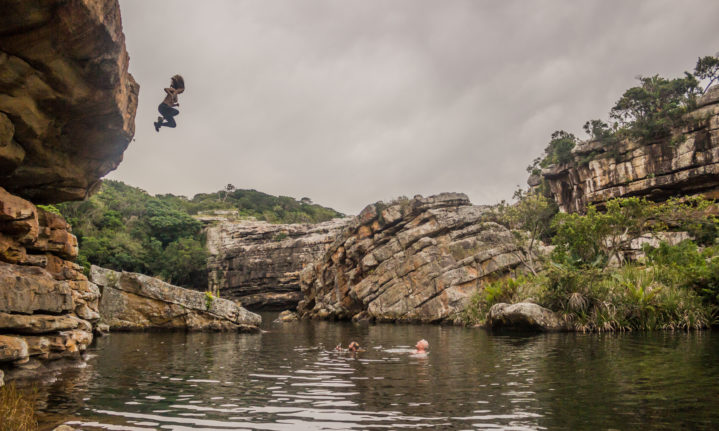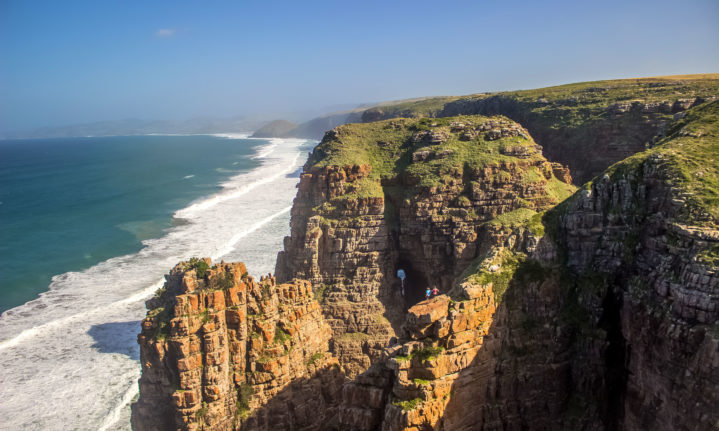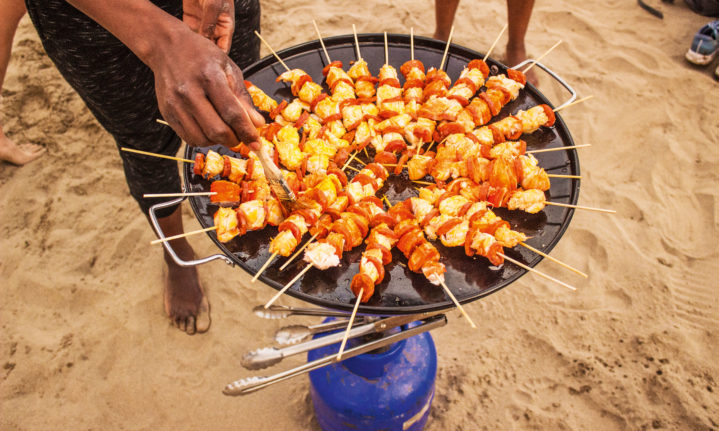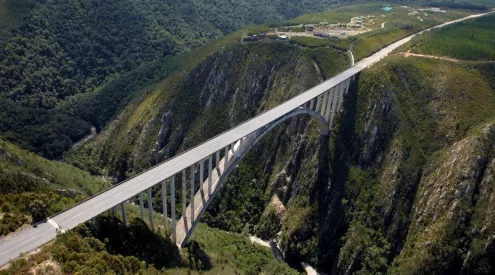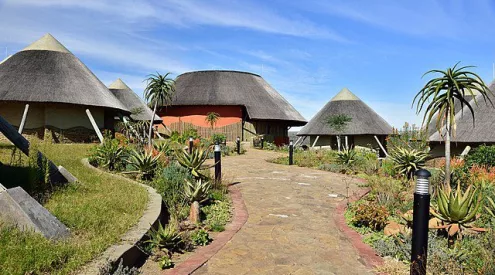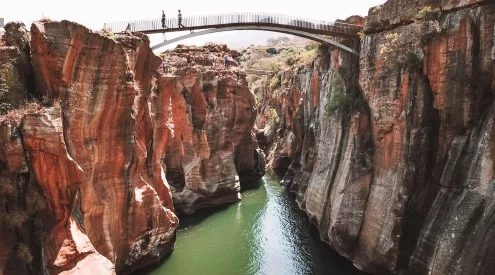‘We won’t see many people over the next few days and most of the beaches we cross are inaccessible by car. To really experience this area, you need to walk it,’ guide Matt Botha told us at the start of our four-day hike on the Wild Coast. Then, as if to kick-start our expedition and give us a taste of things to come, he turned and waded through the chest-deep river without looking back. We were off.
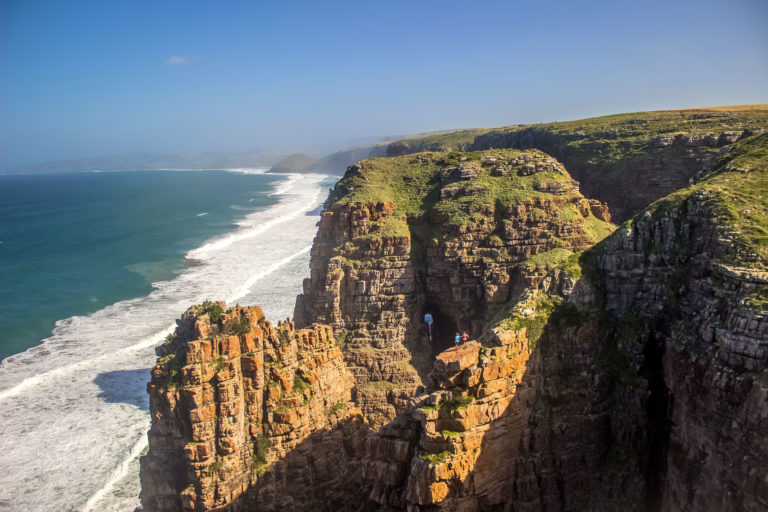
Image Credit: Matt Sterne
Our group of 20 hikers had gathered on the otherwise-deserted Mtentu Beach in the northern reaches of the former Transkei. Sandstone cliffs jutted above the pristine estuary behind us while the ocean churned nearby. Matt, the owner of Wild Child Africa, spent much of his childhood running free on these beaches and now shares his considerable knowledge, as well as his beaming appreciation for the people and coastline of this region, on his hikes.
‘There are 109 river mouths along the Wild Coast, a 280-kilometre-long strip that runs from the Kei Mouth up to Port Edward. That’s a river every two-and-a-half kilometres,’ Matt said. We’d be walking through Pondoland, the wildest part of the Wild Coast, and every day the terrain would be different. ‘Today we’ll pass through the beautiful grasslands and ravines of the Mkambati Nature Reserve, tomorrow is the shelf section, the next day is the cliff section, and the last day we’ll walk along a string of lovely beaches,’ Matt explained.
The weather was overcast on that first morning and the ocean was a striking colour, as clear blue as Listerine. Purple crabs scuttled across the sand as we made our way onto the meadows of the nature reserve. Flanked by the Msikaba and Mtentu rivers, Mkambati is just 10 kilometres long and five kilometres wide. The forested ravines and coastal grasslands would be our playground for the day.
‘There’s a very special microclimate from Port St Johns up to the Mzamba River,’ Matt told us. ‘Many species of frogs, plants, insects and animals are endemic to this area. The Mkambati palm, or Pondo coconut, is a good example of this as it only grows along the western banks of the two rivers bordering the reserve.’
Before long we crossed a river that cascaded onto a sheltered beach, and turned to follow it inland. Indigenous trees such as Natal mahogany, milkwood and mdoni lined the river. After 100 paces we climbed into an elevated cave, overlooking a massive pool fed by another waterfall. Over lunch we took turns jumping into the pool below us. In the afternoon, as we walked along a grassy avenue lined by succulents, we spotted the spray of whales on the horizon to our left. And a few moments later saw red hartebeest and eland to our right.

Image Credit: Matt Sterne
We arrived on Msikaba Beach as the sun was setting, and were joyfully greeted by Matt’s team and a pop-up bar of cold beers, sparkling wine and do-it-yourself gin concoctions. Crayfish and chorizo sosaties sizzled on the skottel and our exhausted chatter soon surged to a louder, happier octave. We overnighted in comfortable beachside tented camps (and the third night at Mbotyi Lodge) and each dinner was a fully catered feast with the likes of fillet with mushroom sauce, chicken curry and a seafood platter. All alcohol was included, so our boisterous group often had slow starters in the mornings.
No one is sure of the number of shipwrecks along the Wild Coast, but it’s extremely high. Hazel Crampton, who wrote a book about shipwreck survivors in Pondoland called The Sunburnt Queen, provided one reason: ‘The Wild Coast is one of the few places in the world which experiences true freak waves. Its killer waves are spawn of titans, born when a howling south-westerly, driving massive swells before it, encounters the opposing force of the mighty south-streaming Agulhas current … to create a freak [wave] of nightmarish dimensions and power.’
We witnessed this raw power at the end of our second day near Lupathana. After a canoe trip on the Msikaba River in the morning, snoozing on the beach after lunch and an entertaining river crossing, we entered the shelf section. A long ledge of rocks hung above the breakers. Each wave sent spray up well above our heads in which we saw flashes of disappearing rainbows. A big wave would set off a sequence of sprays down the line like an aquatic fireworks display. I said as much to a fellow hiker and he replied, ‘It’s better than fireworks.’ The thrill of the brutal ocean was countered by the civility of a cheese platter and well-stocked bar, to once again end the day on a high.
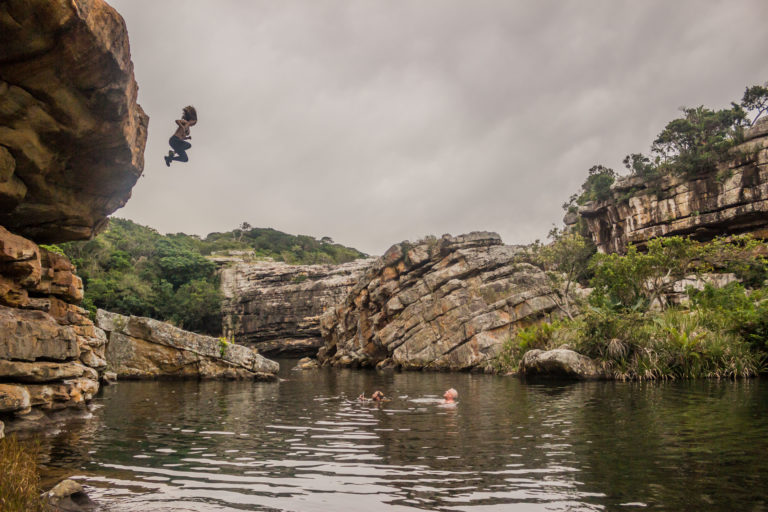
Image Credit: Matt Sterne
After two days of relatively flat walking, the landscape changed on the third between Lupathana and Mbotyi. Seaside meadows became hills, which became cliffs. Early in the day, we scampered down some rocks, rounded a bend and came upon a spectacular sight: a 40-metre waterfall plunging to the thunderous ocean below. This well-known landmark is the start of Waterfall Bluff, a stretch of cliffs where three waterfalls meet the sea. We shed our sweaty shoes and tops and scrambled down to shower in the Mlambomkhulu Waterfall. It was breathtakingly cold but, as Matt said, ‘the best shower you’ll ever have’.
Leaving the roar of the ocean behind for a few hours, we climbed up onto a plateau and came upon the best views of the hike. From atop a blustery cliff we could see all the way down the rugged coastline until it faded from sight. Marching sets of waves rolled in, relentless and savage. Below us bizarrely shaped giant rock formations, with names like Cathedral Rock and The Keyhole, jutted out of the ocean.
In the afternoon, we descended to a beach free of footprints or any sign of man. Cows stood defiantly, scowling at our intrusion. Our party slowed and spread out on the beach, each hiker content to walk at their own pace as we neared Mbotyi. We were beginning to move with the rhythm of the Wild Coast.
Next morning, Matt briefed us one last time. ‘This is my favourite day,’ he said. ‘It’s 10 kilometres of classic Wild Coast beaches.’ We hugged the coast, crossing a series of beaches interspersed by hills like kinks in a carpet. We walked in a quiet fourth-day calm, delighted to see more but aware of a slight sadness that it would soon be over.
The hike had been as well-paced and balanced as the tides, starting slowly and building to something monumental. The effort from the Wild Child team to create a special experience, the exuberance of the group and the scenery all combined to create an incredibly rewarding trip. (What made it even more poignant was that the proceeds went to help their friend, Ryan Walker, fight his battle against motor neuron disease.)
‘This walk changes people,’ Matt said. ‘They become calmer and more centred.’ I had to agree with him. It was as if the wind and the roar of the ocean had ruffled our souls, forcing us to piece ourselves back together again in a simpler way.
Our hike finished with a slow walk up a long, steep hill. At the top we were rewarded with a view of the stunning Manteku estuary, a refuge of beach, trees and river that’s as close to paradise as you’ll get. Down below, we were welcomed by another enticing beach bar. Charging our glasses and slurping fresh oysters with barely another soul in sight was the perfect way to end our walk on South Africa’s wildest coast.
Plan your trip
Getting there: Wild Child Africa arranges transport from Durban, Mthatha or East London. For self-drivers, they will take your vehicle to the finish point. Need to know The Wild Coast generally has moderate weather all year round but is best visited in the drier winter months from May to August. Summer brings higher temperatures as well as thunderstorms and spring rains come in October.
Rate and Booking From R2 000 per person a day. Find them at wildchildafrica.com
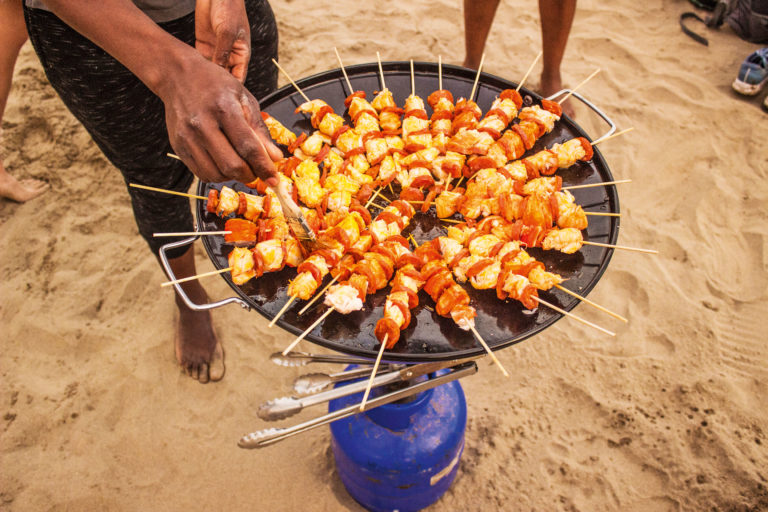
Image Credit: Matt Sterne









